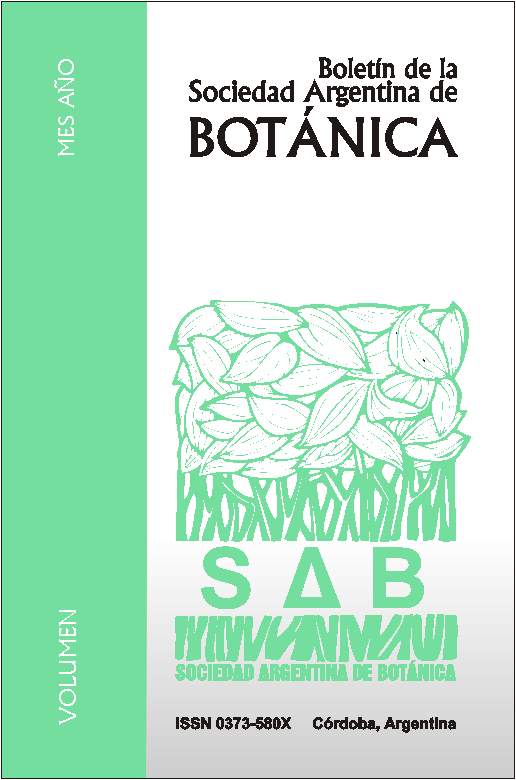Foliar and stem anatomical functional traits occurrence in 35 xero-halophytic species
DOI:
https://doi.org/10.31055/1851.2372.v49.n3.9465Keywords:
xero-halophytes, ecological anatomy, salt marshes.Abstract
Foliar and stem anatomical functional traits occurrence in 35 xero-halophytic species. The varied vegetation of the salt marshes develops specific strategies to address factors that limit growth. To inquire about these adaptive mechanisms, leaf and caulinar anatomy was studied in 35 species inhabiting the Salitral de la Vidriera (Prov. Buenos Aires), using traditional histological techniques. A few species have thick cuticle while much of them have thickened walls of epidermal cells. Most leaves are amphistomatic, presenting some species protected stomata. Only three species have salt glands. There is a scarce development of sclerenchymatic tissue at leaf level, while the stems have a great proportion of sclerenchyma and collenchyma. Overall both organs have aqueous tissue. The most commonly type of leaf anatomy is isolateral mesophyll, the dorsiventral, Kranz and central structure are less frequent. Stems of three species have endodermis. Several species develop an early secondary growth, and in some is observed an atypical secondary growth by the differentiation of master cambium. In this work, which is the first morphoanatomical study in southwest salt marshes of Buenos Aires, it was found that the occurrence of functional anatomical characters is more diverse in leaves than in stems.
Downloads
Issue
Section
License
Provides immediate and free OPEN ACCESS to its content under the principle of making research freely available to the public, which fosters a greater exchange of global knowledge, allowing authors to maintain their copyright without restrictions.
Material published in Bol. Soc. Argent. Bot. is distributed under a Creative Commons Attribution-NonCommercial-ShareAlike 4.0 International license.





